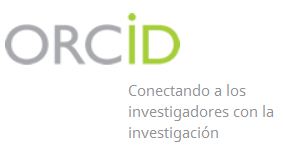How to teach neurology using the team-based learning method
Keywords:
learning, problem solving, neurology, students.Abstract
Introduction: Neurology teaching has faced difficulties nowadays, the reason why the term “neurophobia” has emerged, used to characterize any difficulty and fear that medical students worldwide report when it comes to Neurology-related content. Studies have shown that traditionally chosen teaching strategies are the main causes for this phenomenon. Methodological choices, such as team-based learning, represents a solution in this context.
Objective: To argue how team-based learning is implemented, its characteristics and how Neurology teaching can be developed using this method.
Methods: An integrative review was carried out, between 2002 and 2019, in the ERIC, MEDLINE, PUBMED and EBSCO databases, using the words aprendizaje [learning], estrategias de enseñanza [teaching strategies], aprendizaje en equipo [team learning], neurología [neurology] and examen neurológico [neurological examination]. The studies were included if they dealt with the benefit of the neurology team-based learning method, its characteristics and principles.
Results: Fourteen articles and systematic reviews were found, in which the method was defined in terms of its principles and benefits for neurology learning, which reinforced its role as a solution for settings in which it was difficult to learn these contents.
Conclusions: The application of this method requires, according to the literature review, adequate planning and development of evaluation instruments. The benefits of the method are evident, even as an option in the fight against neurophobia.
Downloads
Downloads
Published
How to Cite
Issue
Section
License
Los autores conservan todos los derechos sobre sus obras, las cuales pueden reproducir y distribuir siempre y cuando citen la fuente primaria de publicación.
La revista se encuentra sujeta bajo la Licencia Creative Commons Atribución-No Comercial 4.0 Internacional (CC BY-NC 4.0) y sigue el modelo de publicación de SciELO Publishing Schema (SciELO PS) para la publicación en formato XML.
Usted es libre de:
- Compartir — copiar y redistribuir el material en cualquier medio o formato
- Adaptar — remezclar, transformar y construir a partir del material.
La licencia no puede revocar estas libertades en tanto usted siga los términos de la licencia
Bajo los siguientes términos:
- Atribución — Usted debe dar crédito de manera adecuada, brindar un enlace a la licencia, e indicar si se han realizado cambios. Puede hacerlo en cualquier forma razonable, pero no de forma tal que sugiera que usted o su uso tienen el apoyo de la licenciante.
- No Comercial — Usted no puede hacer uso del material con propósitos comerciales.
- No hay restricciones adicionales — No puede aplicar términos legales ni medidas tecnológicas que restrinjan legalmente a otras a hacer cualquier uso permitido por la licencia.
Avisos:
- No tiene que cumplir con la licencia para elementos del material en el dominio público o cuando su uso esté permitido por una excepción o limitación aplicable.
- No se dan garantías. La licencia podría no darle todos los permisos que necesita para el uso que tenga previsto. Por ejemplo, otros derechos como publicidad, privacidad, o derechos morales pueden limitar la forma en que utilice el material.


